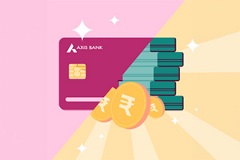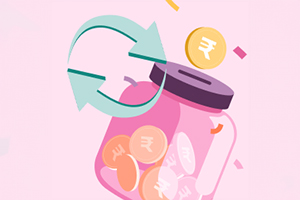Digital banking offers the convenience of accessing your Bank Account transferring funds and managing your finances, all from the comfort of your
home or on-the-go. However, with this convenience comes the critical need for robust digital banking security. As
more individuals and businesses rely on online banking, understanding the security measures employed to protect your
financial information is paramount.
Security measures in digital banking
1. Login protection
What fraudsters use: Fraudsters often use phishing attacks to steal login credentials by tricking
users into entering their details on fake websites or responding to fake emails.
What to do to avoid fraud: Ensure you create strong, unique passwords combining letters, numbers and
special characters. Change your passwords regularly and be cautious of emails or links requesting your login
information.
2. Data encryption
What fraudsters use: Fraudsters use techniques like man-in-the-middle attacks to intercept data
during transmission.
What to do to avoid fraud: Always ensure that the website uses HTTPS and look for the lock icon in
the browser’s address bar. Use banking apps that employ advanced encryption standards (AES) to safeguard your data.
3. Serious account management
What fraudsters use: Fraudsters exploit outdated software with known vulnerabilities to gain access
to accounts.
What to do to avoid fraud: Regularly monitor your account for unusual activity, update your contact
information, and keep your banking app and devices updated with the latest security patches.
4. Logout
What fraudsters use: Fraudsters take advantage of users who neglect to log out, gaining access to
their accounts and personal information.
What to do to avoid fraud: Always log out of your account after completing your banking session,
especially on shared or public devices. Manually log out, even if the app or website has an automatic timeout
feature.
5. Two-factor authorisation (2FA)
What fraudsters use: Fraudsters might try to intercept OTPs via SIM swapping or phishing.
What to do to avoid fraud: Enable two-factor authorisation for an extra layer of security. Use
authentication apps for generating codes rather than relying solely on SMS-based verification.
6. IPIN security
What fraudsters use: Fraudsters use social engineering tactics to trick users into revealing their
IPIN or steal it through malware.
What to do to avoid fraud: Choose a strong, unique IPIN and change it regularly. Never share your
IPIN with anyone and be wary of unsolicited communications asking for it.
7. Session timeout
What fraudsters use: Fraudsters exploit unattended sessions to access accounts and steal
information.
What to do to avoid fraud: Ensure that the session timeout setting is activated on your banking app.
Manually log out if you plan to step away from your device, even briefly.
8. Digital certificate
What fraudsters use: Fraudsters create fake websites that mimic real banking sites to steal login
credentials.
What to do to avoid fraud: Check for a secure connection (https://) and the presence of a digital
certificate before entering sensitive information online. Verify the website’s authenticity by looking for the lock
icon and clicking on it to view the certificate details.
9. Virtual keyboard
What fraudsters use: Fraudsters deploy keyloggers through malicious software to capture every
keystroke typed on a physical keyboard.
What to do to avoid fraud: Use the virtual keyboard provided by your banking website or app to enter
your password and IPIN to prevent keyloggers from capturing your credentials.
10. Online spending limit
What fraudsters use: Fraudsters often attempt to make large transactions once they gain access to an
account.
What to do to avoid fraud: Set daily or monthly spending limits for online purchases and transfers.
This measure adds an extra layer of control over your account activity, minimising potential losses.
11. SMS alerts
What fraudsters use: Fraudsters rely on going unnoticed to drain accounts or commit fraud over time.
What to do to avoid fraud: Activate SMS alerts to receive real-time notifications of transactions,
login attempts and changes to your account settings. Quickly respond to any suspicious activity by contacting your
bank immediately.
Also Read: 8 best
security tips for your Credit Cards
Conclusion
Digital banking security is paramount in our increasingly online world. By understanding and implementing the
comprehensive security measures discussed, you can safeguard your financial information against the ever-evolving
tactics of fraudsters.
With the Axis Bank Mobile App, which offers biometric authentication and customisable online spending limits, you
have robust options to enhance your security further.
Remember, digital banking security is a shared responsibility. Stay informed and alert, and take advantage of the
security features available.
Disclaimer: This article is for information purpose only. The views expressed in this article
are personal and do not necessarily constitute the views of Axis Bank Ltd. and its employees. Axis Bank Ltd.
and/or the author shall not be responsible for any direct / indirect loss or liability incurred by the reader
for taking any financial decisions based on the contents and information. Please consult your financial advisor
before making any financial decision.








